The Land Rover rumbled down the dirt road, grassy plains stretching in every direction. “Heavy traffic today,” our guide said, as he pointed to yet another spotted hyena.
We had been encountering hyenas every few minutes, each one running down the center of the road. Hyena traffic. They were headed to the same place we were: the famous Serengeti wildebeest migration.
The spotted hyena is a bizarre beast, but most of us recognize it from regular appearances in nature documentaries. We know it, or more likely, think we do.
But did you know the spotted hyena is just one of 4 hyena species? The other three species are much less studied, often much less visible and much less known.
With their “laugh,” bizarre appearance and varied diet, hyenas are among those creatures that generate myth, legend and misinformation. Many consider them ugly. They are frequently considered less “noble” than predators like the lion and cheetah. Consider their portrayal in The Lion King, where hyenas are drooling, stupid dolts, worthy only of living in a wasteland.
That won’t do.
Although they bear a superficial resemblance to dogs, hyenas aren’t canines. They’re members of their own family, Hyaenidae. Let’s take a look at the 4 species of hyenas.
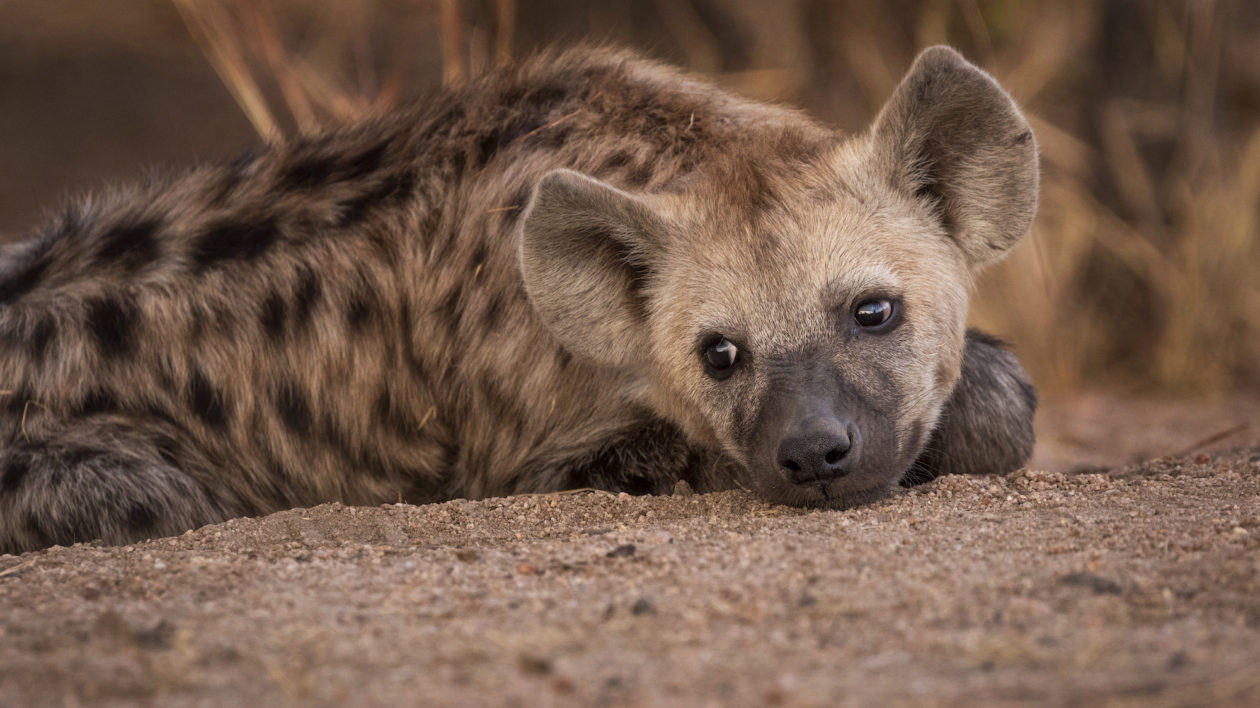
Spotted Hyena
When most of us picture a hyena, it’s the spotted. This is the one that prowls every National Geographic and PBS documentary featuring lions and wildebeests. They range across southern Africa and can be common in many national parks and game reserves. Their celebrity status also leads to a common perception: that hyenas live by stealing prey killed by lions and other predators.
Spotted hyenas do indeed practice this behavior. They are the quintessential opportunists and won’t pass up easy meat. But multiple studies have confirmed that spotted hyenas in the Serengeti and elsewhere get most of their calories by hunting large prey. A small pack of hyenas is quite capable of chasing and killing gazelles, wildebeest and even larger prey like zebras. Their jaws have bone-crushing power, and their stomachs are capable of digesting those bones.
In other habitats – like Ethiopian cities – they eat primarily garbage, performing valuable sanitation services.
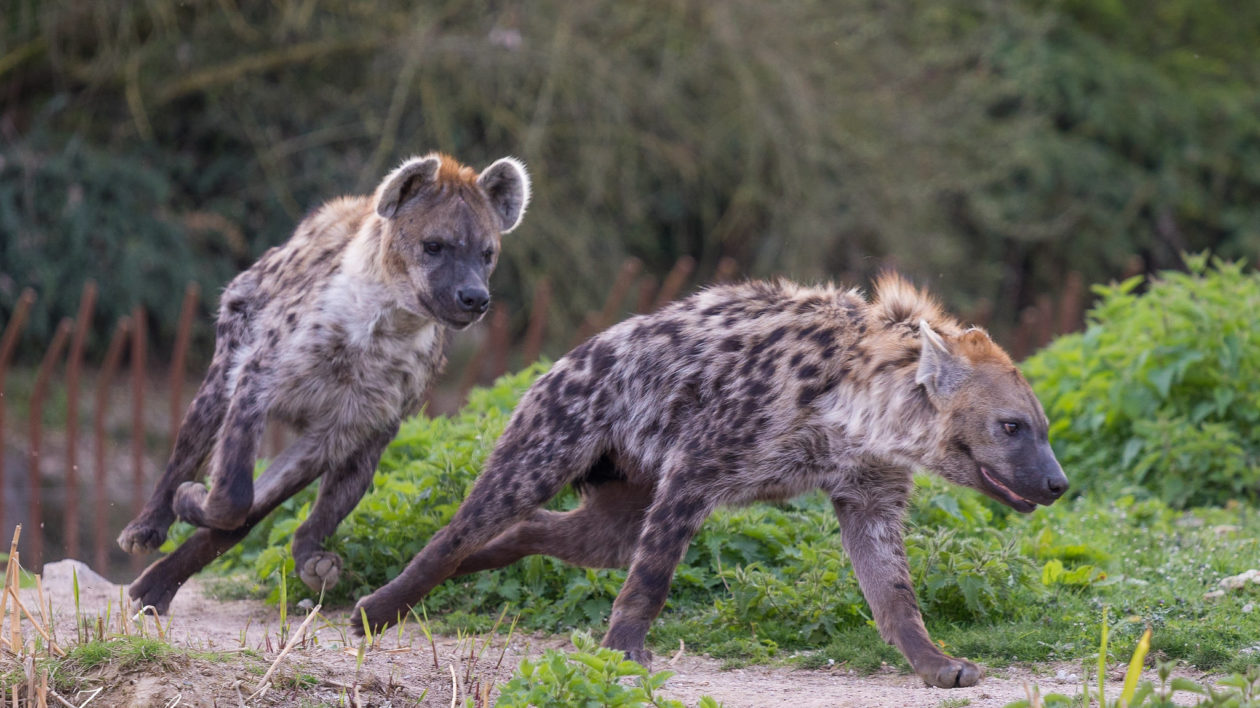
Spotted hyenas live in large maternal-led clans; their social life is worthy of its own blog. They have territories, but as the book Carnivores of the World notes, they will tolerate other carnivores passing through their territory. This is likely what I witnessed in the Serengeti: other hyenas moving to take advantage of the moveable feast of the wildebeest migration.
While hyena clans can be large, most hyenas hunt and scavenge singly or in large packs.
Across cultures, there are superstitious beliefs around spotted hyenas, leading to a lot of persecution. When they’re scavenging, they can be susceptible to being caught in poachers’ snares. Despite this, spotted hyenas persist.
On safaris, they can often be seen in daylight, especially in prey-rich areas like Kenya’s Masai Mara and Tanzania’s Serengeti and Ngorongoro Crater. I also found that they are often seen at dusk and dawn around wildlife lodges and camps.
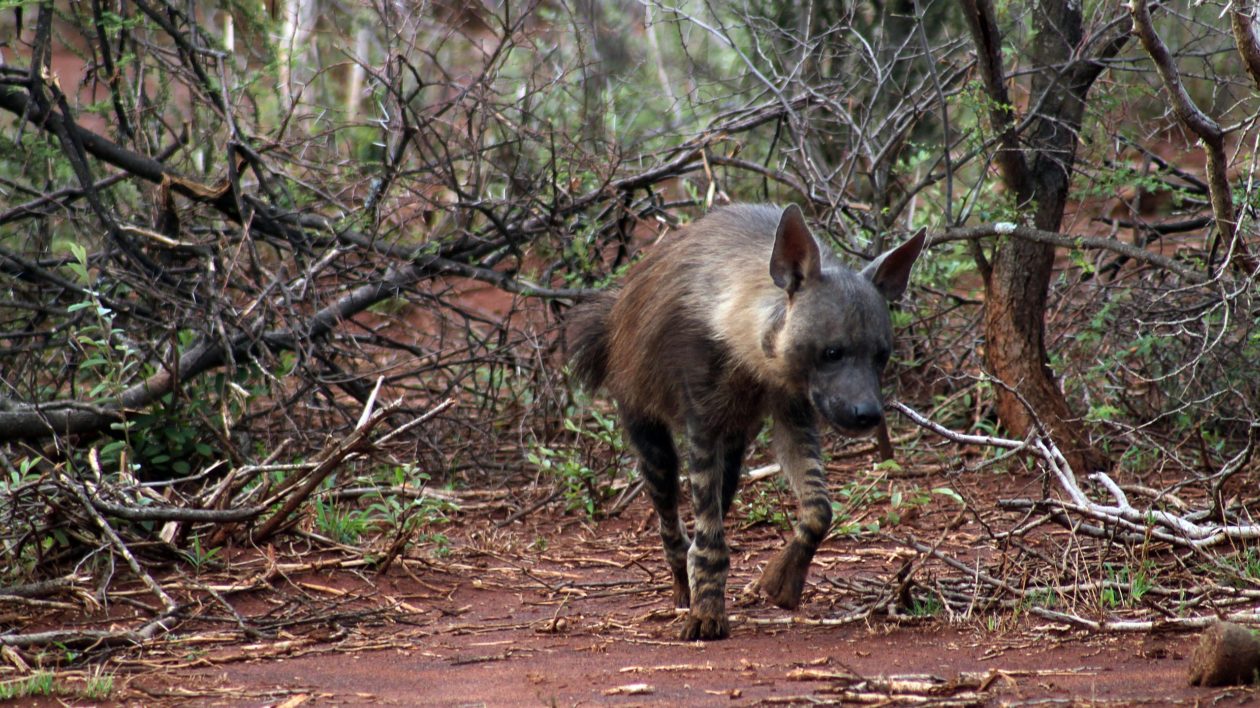
Brown Hyenas
Found in southern Africa, the brown hyena’s range overlaps with the spotted. But few will see one, either on safari or on a nature show. Even where it is common, the brown hyena exists at low population densities. It is almost exclusively nocturnal and is a solitary forager. This makes spotting one difficult.
The brown hyena is a bit smaller and hairier than a spotted hyena. These hyenas roam desert areas, often covering significant distances in search for carcasses to scavenge. Despite its more innocuous appearance, it will chase other cat species (like cheetahs and servals) away from kills. But spotted hyenas will chase off brown hyenas.
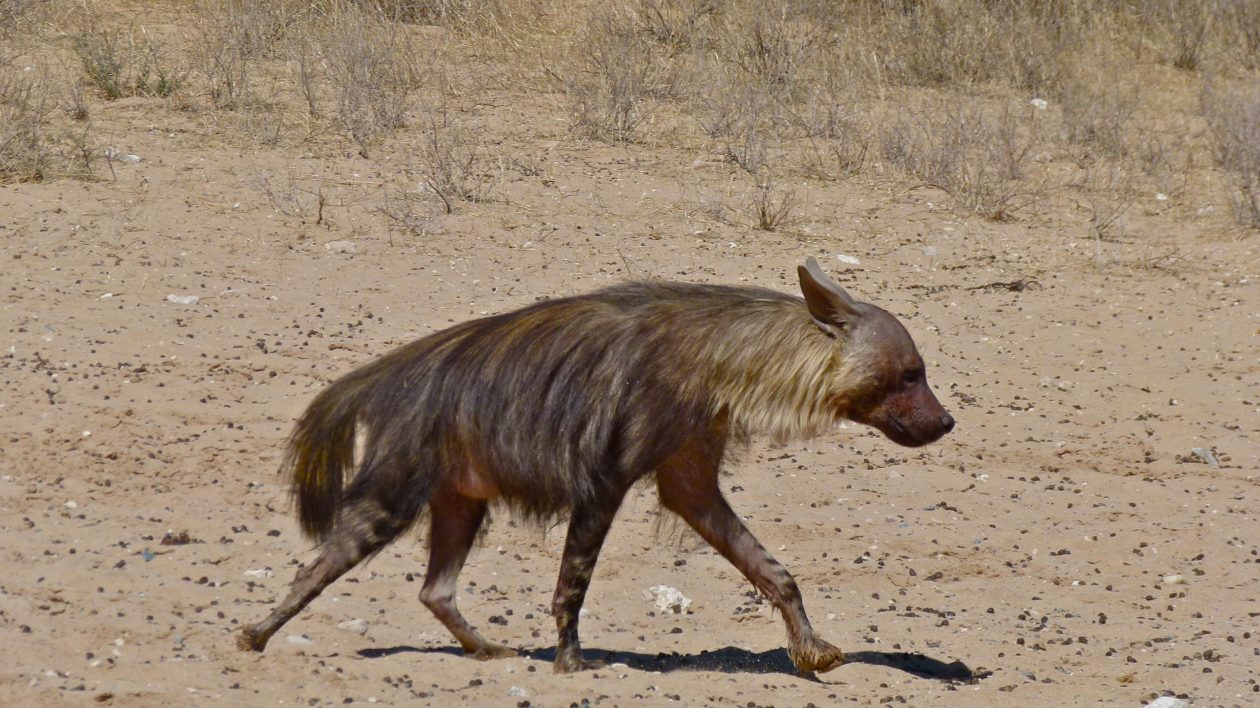
In a recurring theme for hyenas, it is often persecuted. In this instance, the mistaken belief is that they prey on livestock, even though their predation is limited.
I saw lots of brown hyena tracks and ample evidence of their scavenging at the Cape Cross fur seal colony on the Namibian coast. Due to oceanic conditions, many seal pups were starving the year I visited, a heart-wrenching sight for me but a banquet for brown hyenas. In fact, brown hyenas live in higher densities near fur seal colonies. They scavenge carcasses but will also kill baby seals.
Unfortunately, no brown hyenas showed during my visit. But it remains one of the best places to see this species. Serious mammal watchers and safari enthusiasts also have luck at South Africa’s Pilanesberg National Park, and various Kalahari reserves.
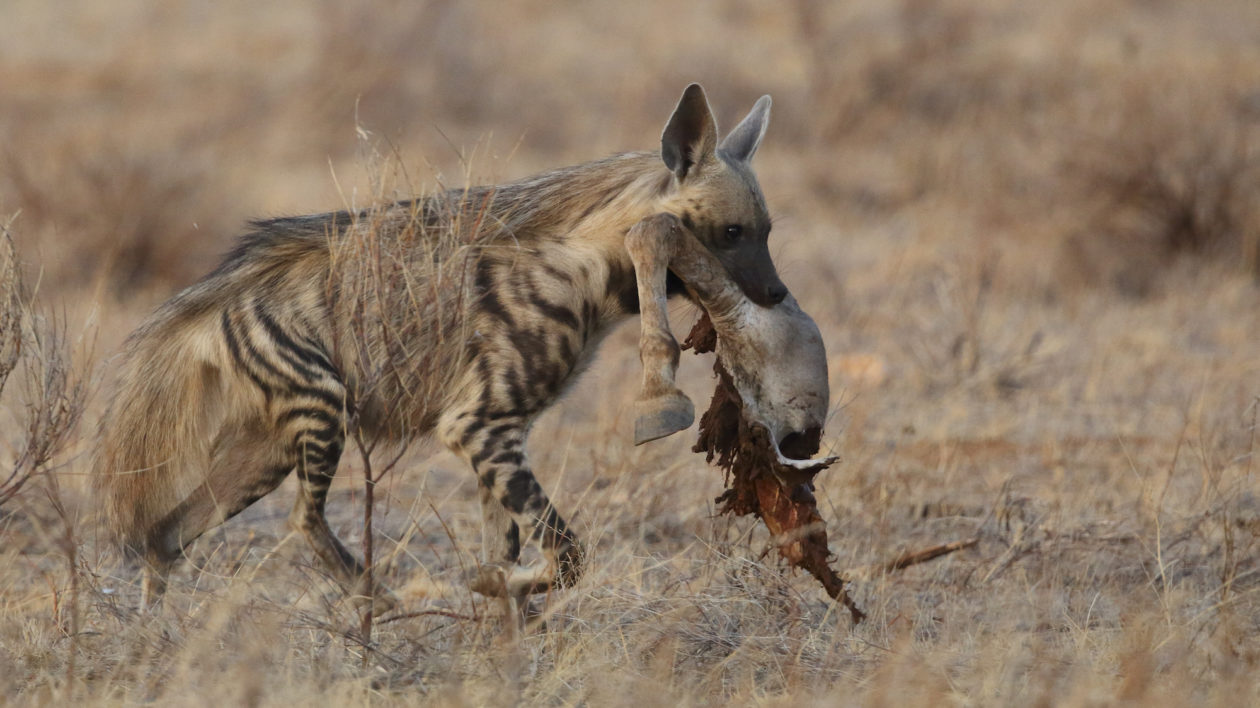
Striped Hyena
This is the only hyena species that ranges outside Africa; it is also found in the Middle East, India and into central Asia. Despite its wide range, it is also the least studied. Its nocturnal behavior and cryptic habits have also likely led to some misperceptions.
For instance, when this species is spotted, it is often alone. This has led to an oft-repeated idea that the striped hyena is a solitary species. But a recent study utilizing camera traps found that striped hyenas actually have a complex social structure. They may forage alone but they interact with others frequently.
Striped hyenas primarily scavenge the carcasses of large mammals, but they too are very opportunistic. In Asia and northern Africa, they often live on the edge of human settlement and will adjust their feeding accordingly. This, of course, can bring them into conflict with people. In densely populated areas, large animal carcasses mean livestock, so they are often found near farms. They will also gorge in fruit orchards and vegetable gardens. In areas, they forage on roadkill, in turn putting them at risk of vehicle collisions.
Their habits make them difficult to see in the wild. Checking near known den sites is often the best method to see one (but please ensure you or your guide don’t disturb the den). The best opportunities in Africa are reserves like Kenya’s Samburu and the private Laikipia, especially during night safaris. They are also found in Kenya, with some photographers having luck around Ndutu.
Specialty wildlife tour operators in India often have great success with striped hyenas, particularly via night safaris and scoping out known dens. Reserves in the Little Rann of Kutch also offer great sightings.
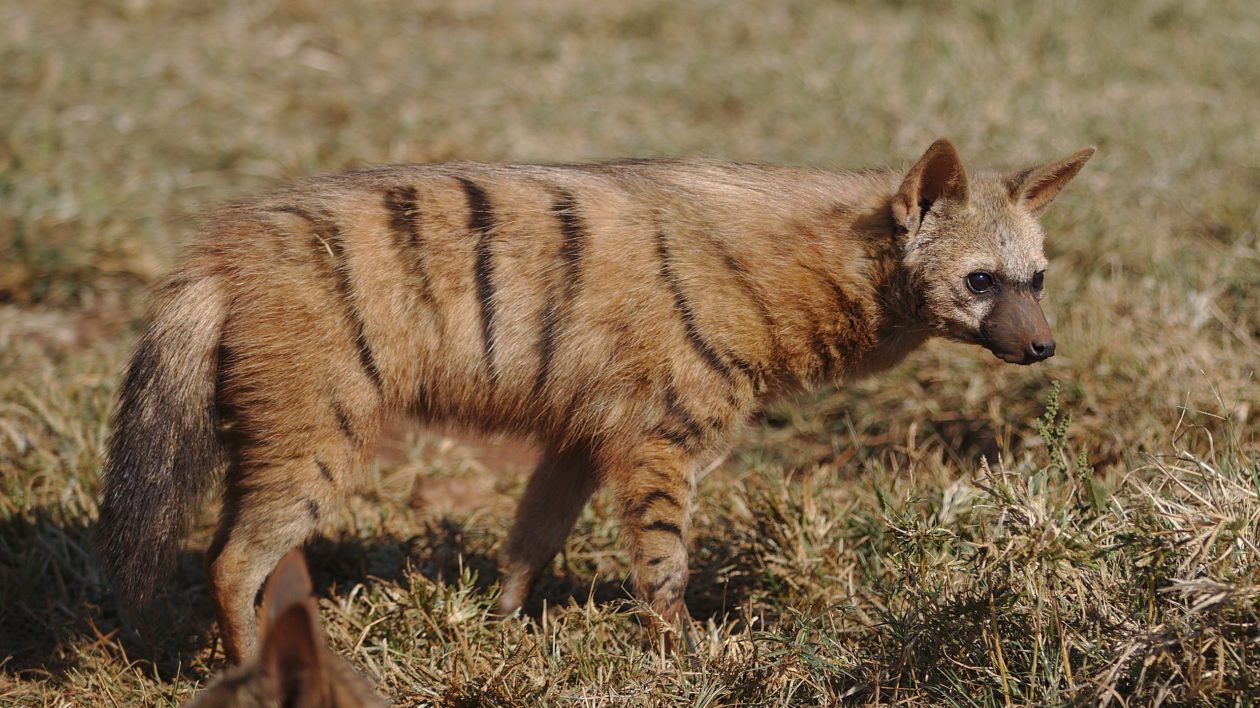
Aardwolf
The aardwolf looks the least “hyena like” of the family; it more resembles a dainty fox. Its diet is also quite different: the aardwolf feeds almost exclusively on harvester termites. Unlike other termite feeders like the aardvark, it doesn’t dig and dismantle termite mounds. Instead, it licks the insects off the surface. An aardwolf can eat up to 300,000 termites in a night.
Does this innocuous behavior spare aardwolves from the human wrath directed at other hyenas? No, it does not. Following a depressing theme, the aardwolf looks like a predator, so it’s persecuted like a predator. They are often blamed for livestock predation, and killed during campaigns aimed at jackals. The spraying of insecticides can also deprive aardwolves of termites, leading to starvation or reduced reproductive success.
Still, the aardwolf is fairly common in southern and eastern Africa. It is largely nocturnal and this is an animal to spot on night safaris. I saw several on a private reserve near Kimberley, South Africa, while searching successfully for aardvarks.
Even animal lovers often consider hyenas to be less charismatic than other species. They don’t attract the conservation attention of many other large African mammals. But our perception of the hyena as an ugly scavenger also means it’s prone to human hatred and ignorance. It’s time to take a new look at the hyena; whether slurping termites or hunting wildebeest, they’re fascinating mammals worthy of our respect and attention.
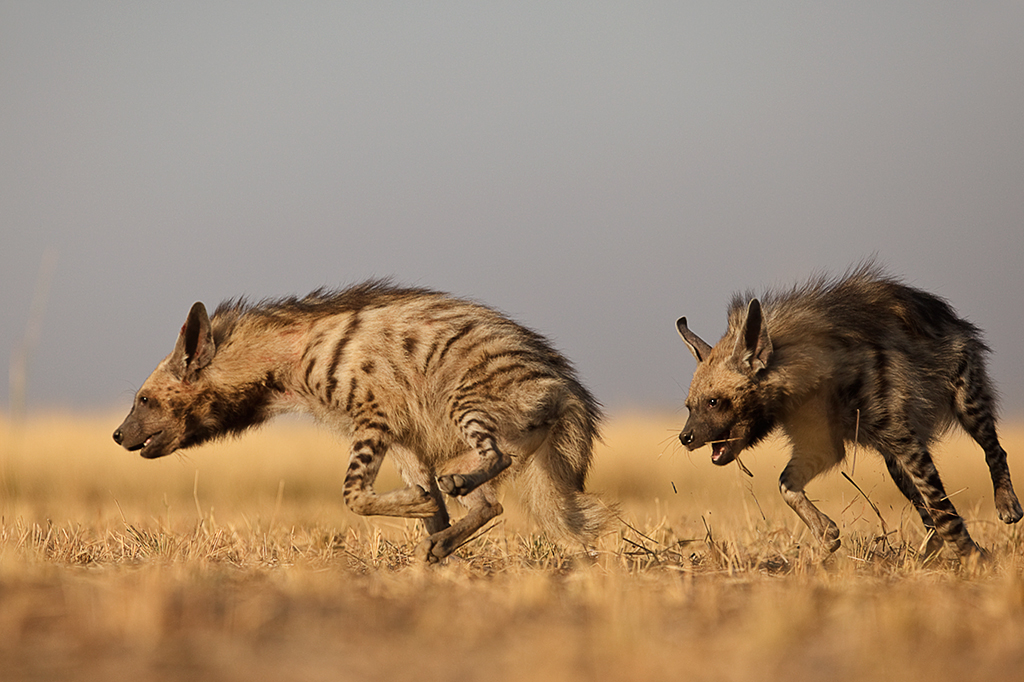



Once I saw a documentary about lions & it showed the vicious, cruel, thieving hyenas trying to get some of the wildebeest, that the lions had killed. I wish that the truth had been put in the show, it was in the 80s, but today, forty years later, I saw an article about lions v hyenas & hyenas were made out to be the bad guys! It’s 2023, let’s get the truth out there, hyenas kill as often as lions & lions scavenge as often as hyenas.
Love this program…I had no idea there were such animals as aardwolves!!
Had some lovely night excursions in S.Africa long ago and wish I could go again….
Thanks for this great program!
Very enlightening! Loved the photos; especially the Aardwolf! Thank you
I guess, hyenas, like most predators get the same human hatred & ignorance. At least, in our current time, thats what it seems like. The attitudes towards, wolves, mountain lions, bears? Kind of ignorant & hateful!
Great article thank you. I did not know about the other 3 types of Hyena. I quite agree they are a much maligned and misunderstood creature , just like our own Coyote, both get blamed for all sorts of predation and are hunted down, when in fact they do a great service in cleaning the environment and playing a valuable role in their ecosystems.